Your login information returned multiple users. Please select the user you would like to log in as and re-type in your password.
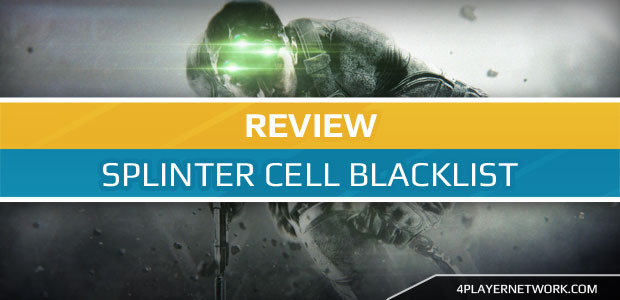
There was a time in which the name in the stealth game genre was Hideo Kojima’s epic series Metal Gear Solid. Solid Snake and his entourage of strange characters and towering mechs saw occasional competitors in games like Tenchu and Thief but it wasn’t until Ubisoft threw their hat in the ring with Tom Clancy’s Splinter Cell in 2002 in which the gigantic Japanese franchise would really have a challenger to the throne. Over the years the Splinter Cell series has grown in ways both exciting and unexpected, with 2007’s Double Agent marking the end of the traditional formula and 2010’s Conviction ushering in a more action-oriented one.
Conviction however became the most polarizing title of the series and though its more personal story approach was appreciated, many lamented the kill-everyone-and-move-on gameplay that permeated most of the experience. Ubisoft seems to have taken this fan feedback to heart and this year has brought us Blacklist, a seemingly more balanced “greatest hits” take on the variety of gameplay formulas across the 11 years of this series’ existence.
Are these changes enough to save Splinter Cell from a spiraling downfall and becoming the next Resident Evil?
Developer: Ubisoft Toronto
Publisher: Ubisoft
Release Date: August 20th, 2013 (360, PS3, PC, Wii U)
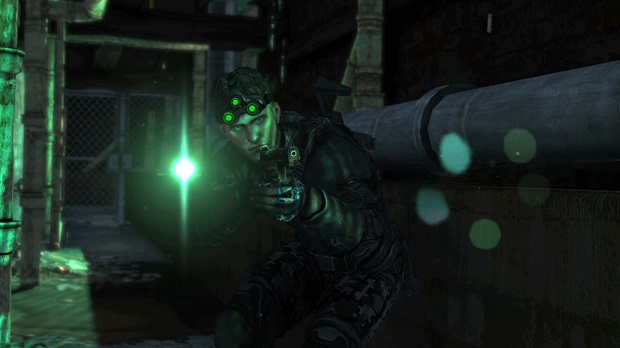
Back in Urban Gray Camouflage (Black)
Several months after the devastating EMP attack on Washington DC by Tom Reed’s corrupt Third Echelon, former Splinter Cell Sam Fisher is still trying to figure out his future. He’s reconnected with his daughter, Sarah, after having one another’s deaths falsified by Irving Lambert, and has joined up with friend Victor Coste’s Paladin 9 private security firm. On a routine trip to Guam, Sam and Vic are caught up in a massive terrorist attack, one that devastates Anderson Air Force Base. Vic is hurt in the attack and Sam and their tech advisor Charlie Cole are barely able to make it out alive.
Shortly thereafter a group known as the Engineers claim responsibility, promising a series of even more devastating attacks every seven days until America withdraws their troops from abroad. In response, US President Caldwell, remembering Sam’s rescue of her during Conviction, approaches Fisher with an offer: complete authority over a new Fourth Echelon initiative only answering to her. Together with series ally Anna “Grim” Grimsdottir, Charile and new recruit Isaac Briggs, Sam must hunt down the Engineers before they are able to complete their deadly countdown.
In many ways, Splinter Cell Blacklist attempts to bring us a story focused on a renewed Sam Fisher and a revitalized, more basic Echelon initiative. Fourth Echelon has the authority to utilize the Fifth Freedom at any given time but is able to act independently, making them far more mobile and thus allowing Sam and crew to take on missions that otherwise wouldn’t happen. This also provides an opportunity to reintroduce us to characters from the previous games as well as bring in new ones. It is here that, from a character standpoint, Blacklist falters.
Sam is easily the biggest victim of this. Splinter Cell Conviction’s story was focused far more significantly on him and his search for Sarah in proportion to how much of the story was center around Third Echelon’s attack on Washington DC. Instead of giving us a more character-driven narrative, Ubisoft has instead pushed his character back to what he was like pre-Conviction: a trained operative with drive but less personality. Elements of Sam’s character remain intact such as his fatherly bond with Sarah but anything more is not really explored. Heck, in this area it seems that Ubisoft skewed its focus a bit, forgiving Anna for faking Sarah’s death which resulted in a self-destructive three year period in Sam’s life, as opposed to his hatred of Andriy Kobin for providing the false body that Anna and Lambert used for said deed. It’s confusing as to why Ubisoft would avoid character development for Sam Fisher when the entire previous game was about just that and, ultimately, I found that to be quite disappointing.
The other primary characters don’t receive proper attention like they should for a series six games in. Anna remains the same do-what-is-necessary hardliner, Charlie is the resident tech geek, Isaac is the eager but green newbie and Kobin is the antagonistic yet entertaining “bad guy”. Everyone fill an archetype role and there is next to no growth between the whole lot. People might ask why I care but given just how much goes into creating this universe that spans six games and novels a piece you would expect there to be changes, especially with the shift in narrative Conviction brought.
Not that this story is meant to bring a focus more on any sort of character development. Instead, Ubisoft’s presentation of Blacklist is focused more on in-the-moment storytelling than grand plot development, giving us a story that links back-to-back levels together rather than spinning a massive web of conspiracy. It’s unfortunately par for the course as a Tom Clancy title rather than the exception. The story will entertain you but it probably won’t be winning any awards, least of all it being all that memorable six months to a year down the road.
Panther is on the Move
Splinter Cell has changed significantly since the 2005 title Chaos Theory in many ways but nowhere is this more prevalent than in the design and gameplay changes. Many, including Ubisoft, have likened Splinter Cell Blacklist to that of a sort of “greatest hits” amalgamation of everything that made the previous installments such interesting titles. I find that I have to agree with this sentiment.
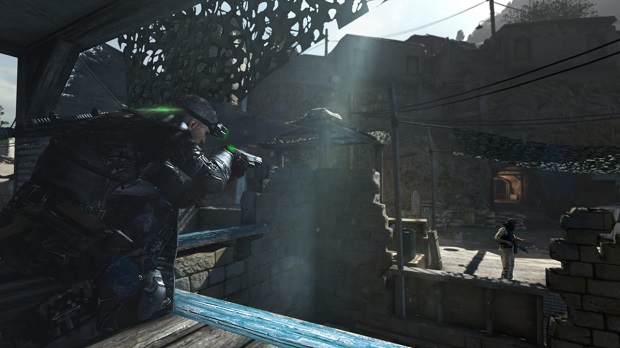
In its most basic sense, Blacklist is the spawn of the marriage of two vastly different Splinter Cell titles: Chaos Theory and Conviction. Returning is the time-honored focus of sneaking through an environment avoiding enemies and engaging in combat as little as possible. This is combined however with Conviction’s much faster pace, creating a far more rapid sense of level traversal and, thus, a much more mobile main character. Despite his age, Sam feels exceptionally agile for a field operative, much less one tasked with such an important mission as stopping the Blacklist. This combination is simply the best of both worlds and balances out just how powerful Sam was in Conviction with how vulnerable he could be in the original titles.
In fact, many of the issues people had with Conviction seem to have been addressed. Our hero is no longer forced to kill everyone in sight as he was in almost all of Conviction and it is in fact possible to beat the game without Sam killing anyone. In addition many of the maps present are both large and open ended, allowing for multiple approaches and play styles. Enemy AI has also seen a dramatic improvement, offering more intricate and random search patterns looking for intruders as well as the reintroduction of guard dogs that will hunt the player down if they are not cautious. It definitely feels like it wants to be a slower experience and Blacklist in fact can be depending on your preferred game methodology.
Splinter Cell Blacklist isn’t all old hat however as many new systems have been introduced or revitalized. Conviction’s somewhat overpowered Mark and Execute still works albeit limiting the player to just three marked targets. Putting an emphasis on Sam’s more predatory nature, Blacklist has also introduced an abduction system for easier melee access to enemies. Hiding behind an object or doorway, Sam can grab passing enemies and immediately knock them out or kill them with the press of a button. Sam can also immediately takedown an enemy from almost any angle in a rather fluid and rapid manner this time around so long as he hasn’t been spotted, the sole exception being armored enemies that can only be taken down from behind.
Side missions are another new addition to the game. Though not contributing to the overall plot in any significant way, side missions can still be quite fun to play through for those wanting a singleplayer experience without having to sit through cutscenes. Each of your principle cast will have their own set of missions you can take on with Grim offering ghost missions, Kobin with terrorist hunts, Charlie with wave survival matches (something that feels almost impossible for those looking to do no-kill runs) and Briggs with strictly co-op oriented missions. You can also replay these missions at any time should you choose to.
Ubisoft has also introduced a new scoring system that adapts to the way players approach the game whether it be ghosting, full assault or a combination of the two known as Panther. Despite rewarding points and grading you based on each play style, Blacklist properly emphasizes stealth gameplay over anything else, rewarding higher points for sneakier actions with the highest possible payout going to avoiding all enemies in an area entirely without being detected. It is a subtle way to enforce being stealthy in a game about doing just that and I have to compliment Ubisoft on implementing such a system. Who knows, maybe we’ll get a few converts from the FPS crowd.
Tying into this scoring system is a revitalized emphasis on cross-mode currency. In singleplayer you receive a multiplier effect to your score which, when totaled, equals the amount of money you are rewarded per mission. The multiplier goes up the more missions you take on so side missions are key to earning you higher rewards. This currency, in turn, can be spent on upgrading your equipment and characters across singleplayer and multiplayer but more on that in a moment.
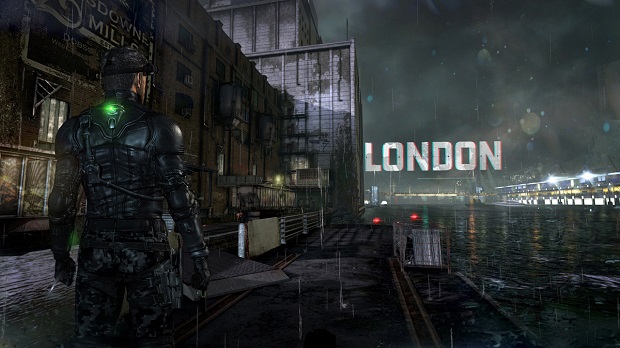
One of the more interesting aspects of the game is something that might surprise fans of the Mass Effect series: your headquarters. Much like the Normandy, Fourth Echelon is run out of The Paladin, a massive airship that allows Sam and the crew to remain mobile and to quickly react to terrorist threats. The player, as Sam, can freely move about Paladin to interact with the principle cast and unlock concept art and the like. This is also the only point in which you can make contact with Sarah Fisher which is disappointing since you only hear her but never actually see her. Don’t expect to have any profound conversations between your crewmates either but it’s definitely a lot nicer than only seeing them in cutscenes and hearing them in your ears.
One final item I simply must point out is the game’s Perfectionist mode. Splinter Cell veterans who were disappointed with the direction Conviction took will be pleased to hear that Perfectionist reverts many of the classic Splinter Cell rules to those much earlier titles. Sonar goggles do not work, targets can be marked but not executed, combat is extremely difficult to survive and you cannot restock your items mid-mission. These seemingly simple restrictions completely change the way you would otherwise play Blacklist and offers a level of challenge that should definitely be experienced by stealth game fans. If you consider yourself a Splinter Cell fan, you are doing yourself a disservice by not playing this difficulty.
Death From the Shadows
The singleplayer aside, Splinter Cell Blacklist offers a fine multiplayer suite to experience and man, am I ever glad to say that what is offered is very,very good. Co-op missions return from Conviction with a storyline running parallel to the main story focusing on Voron, the Russian equivalent agency to Third Echelon. These missions are quite fun to be sure but a single runthrough of them all is all you need to experience with them. No, the true highlight of this suite is the long-awaited return of Spies Vs. Mercenaries competitive multiplayer and I have to say that it is the best online mode of any of the games to arrive this year.
Spies Vs. Mercs has been a long time coming and many Splinter Cell fans will argue that this is the first true-to-form SvM experience since Chaos Theory in 2005. Like the effort Ubisoft put into balancing out Blacklist’s old-and-new gameplay styles, the multiplayer has taken what was best about Pandora Tomorrow and Chaos Theory’s 2v2 action and updated many systems and level design to facilitate a much more expanded experience. For core fans who were upset about how poorly implemented SvM was with Double Agent, you have absolutely nothing to worry about.
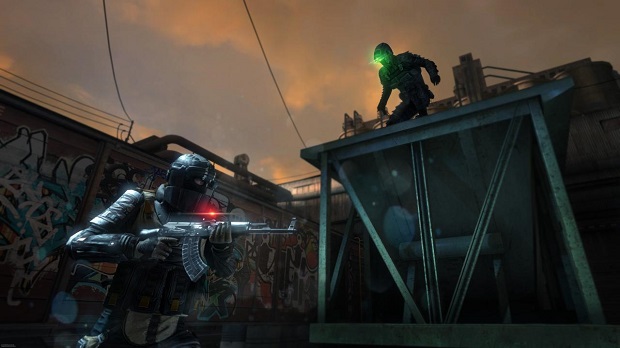
Competitive multiplayer is divided among five different modes: Classic, Blacklist, Uplink Control, Extraction and, well, it wouldn’t be an online multiplayer game with Team Deathmatch, now would it? The concept for Spies Vs. Mercs is actually quite simple: one team plays as vulnerable yet very agile spies from a third person perspective while the other plays as heavily armed yet slow mercenaries from a first person perspective. For the first two modes, mercs must prevent terminals placed throughout the map from being hacked by spies. Once a round is over the teams switch sides and play again. Players rank up based on their performance and earn cash and tokens to unlock or upgrade their gear.
For the purists like me, SvM Classic is the absolute best way to play. This 2v2 mode harkens back to the early days of Splinter Cell multiplayer. Customized classes for both sides cannot be used and instead you are limited to a few key items that were previously featured in the earlier games. Levels have also been relit to emphasize shadows and exploration with the mercs armed with a flashlight and the spies only having access to night vision. These limitations coupled with the redesigned light maps make for incredibly tense experiences that will induce paranoia in both teams. There’s nothing quite like hanging off a railing as a spy, scared to death of a merc flashlight slowly moving its way toward you, its beams of illumination surely to be followed by bullets if you get spotted. It is an intense, fun experience and one I feel that seeps into my soul, begging me to go back and play it any hour of the day.
Blacklist mode offers the same experience albeit in a 4v4 setting. Despite my fear that a 4v4 gameplay style would negate any though of stealth gameplay and oriented it to a more action focus, SvM Blacklist does a surprisingly good job of playing hide-and-seek in an enjoyable manner. New vision modes and character class bonuses make this very team-oriented and discourages playing as a lone wolf. Though the maps are brighter than their Classic counterparts but since the mercs are not given access to a flashlight and instead must rely on alternative gadgets such as sound and motion detectors, both teams feel balanced enough to make gameplay quite engaging for both sides.
Beyond the main modes, Spies Vs. Mercs offers different experiences that you will want to build unique classes for. Extraction tasks a team of mercenaries with stealing a briefcase from the spies in a manner evocative of a one-sided capture the flag match. Uplink Control plays similar to a king of the hill match in which each side vies to secure a certain point on the map. And, well, Team Deathmatch is exactly what you think it is. One thing that should be pointed out is that Team Deathmatch and Uplink Control allow teams to mix and match spies and mercenaries, allowing for some very interesting team balancing opportunities.
Spies Vs. Mercs could have been terribly unbalanced had Blacklist shipped with only generic map design but I’m glad I can report that the six maps available at launch are all unique and interesting. Mercenaries have access to all of the major points on the map but spies have exclusive access to vent shafts and hidden pathes. Particle Accelerator, for example, has a network of upper walkways only spies can access. The map design also takes into account spawn points, with Lebanese Hospital for example starting the spies off on the roof with immediate fast rope options to the lobby below where one of the terminals await. One can only imagine what Ubisoft has cooking for downloadable content at this point. Who knows, maybe the return of classic maps such as DefTech, River Mall, Orphanage, Bank or more? I sincerely hope so.
In short, Spies Vs. Mercs’s triumphant return is something that should be celebrated. In an age in which the only stealth-based multiplayer we can get involves avoiding idiots running around on rooftops with hidden blades in Assassin’s Creed, it is wonderful to see such an inviting and exciting experience appear. Long live the king.
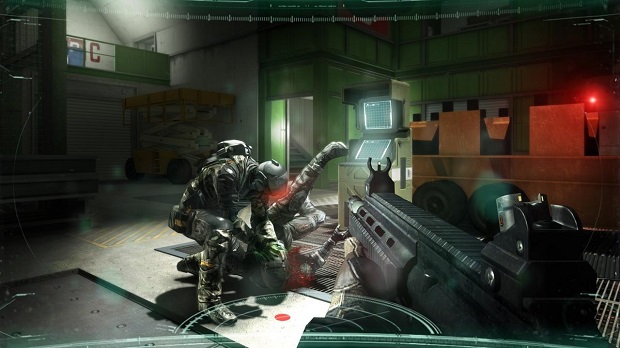
Changing of the Guard
The final year of a console generation tends to yield the best looking titles a system can provide and, in some respects Splinter Cell Blacklist fits this description. Character animations are very nicely done with cutscenes rendering some tense moments. Sam’s takedowns in particular will ‘wow’ you at times both for the intricacy that goes into the move as well as the sheer brutality. If the sort of mocap while acting seen in games such as Enslaved and Blacklist are the future, I look forward to what the future has in store.
Despite that, there are some issues that must be pointed out. This review being based on the 360 version of the game, textures do look quite a bit muddled at times. Character faces lack some animation at times and often are missing emotional depth in comparison to the voice and body movements depict. Lighting can be a bit inconsistent at times as well as, for example, the player should be blinded when utilizing night vision in a well-lit environment. This does not happen sometimes and is most confusing.
The music department needs some work in my opinion as well. Gone are almost all of the orchestral scores done in Conviction save for the core Conviction theme which is mainly used when Sam is on the phone with Sarah. Michael McCann, famous for his work on the Deus Ex Human Revolution, brings us a more synthesized, digital soundtrack but what has been brought to the table doesn’t seem to be nearly as strong as the work put into that or last year’s XCOM: Enemy Unknown. McCann was also responsible for the Splinter Cell Double Agent soundtrack but none of that depth or excitement seems to be present in Blacklist. It’s par for the course honestly and doesn’t seem to be worth your cash listening to outside of the game.
The most egregious error Ubisoft has made is also the most obvious one and I cannot begin to close things out without addressing it: the voice acting changes. Save for a few key cast members such as Andriy Kobin and Victor Coste, the primary voice cast has completely changed this time around. Anna Grimsdottir was previously voiced by Claudia Besso but she has since been replaced for Blacklist by Kate Drummond whose acting experience has been limited to bit parts and the occasional made for tv movie. This isn’t the worst of it though.
Sam Fisher, long voiced by experienced actor Michael Ironside, has been replaced by Eric Johnson, a recent actor known for his work on television shows such as Criminal Minds. This change is a stark contrast to say the least and will jar anyone who has ever experienced any of the Splinter Cell games. The transition from an older voice to that of a much younger one simply doesn’t make sense for a character that has long been touted as a more season, older operator, something that Ubisoft was quick to tout in the early years of Splinter Cell when having to compete with the Metal Gear franchise. Ironside himself is only a few years older than Sam Fisher is supposed to be and Johnson’s presentation neither makes sense for the character nor feels proper. David Hayter being replaced by Kiefer Sutherland is something I can understand since the character of Big Boss has aged considerably and has experienced scarring and battle fatigue as the Metal Gear series has gone on. Ironside being replaced Johnson simply does not match up with what anyone should imagine Sam Fisher to be. It is a terrible decision in my opinion and should definitely be re-evaluated when the next title comes out in a few years. Ubisoft claims that this decision was made because they wanted to do the kind of voice acting during mocap sessions I spoke of earlier. In this regard, I simply don’t understand why Ubisoft couldn’t just put his voice in in post-production. Get your act together, Ubisoft. Sam Fisher is Michael Ironside, end of discussion.
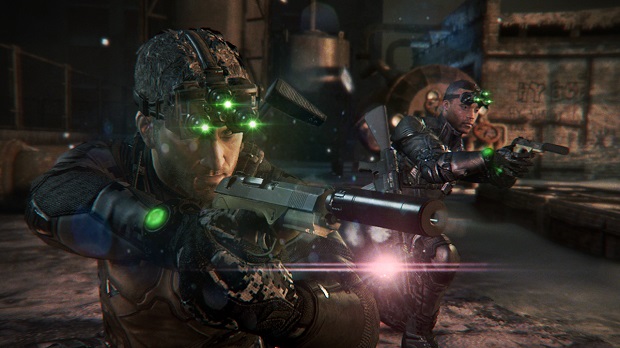
A War Fought in the Dark
Splinter Cell may be but a decade old at this point but despite years of trends such as the rise of the competitive FPS or MOBA, it has stayed relatively true to its formula save for 2010’s Conviction. Blacklist may fail in the story department but its balancing of classic, more methodical stealth gameplay with faster pacing seen in more modern design yields a very exciting amalgamation across all three gameplay modes. The singleplayer may disappoint but the multiplayer offerings more than make up for it with Spies Vs. Mercs almost feeling like it is worthy of being a standalone product. The change of voice for Sam is still at the very least lamentable but it shouldn’t be nearly enough to deter you from having a sold experience with the game.
Ubisoft felt that Splinter Cell needed a revamping with 2010’s Conviction and many disagreed. Blacklist serves as a balancing act between where they wanted to take the franchise and what series fans loved and wanted and the result is one of the best Splinter Cell experiences to date, just shy in my opinion of the stellar Chaos Theory. It’s a return to form and one that I hope will be the benchmark for the series going forward.
Score: 85
Great - Only very minor issues get in the way of greatness.


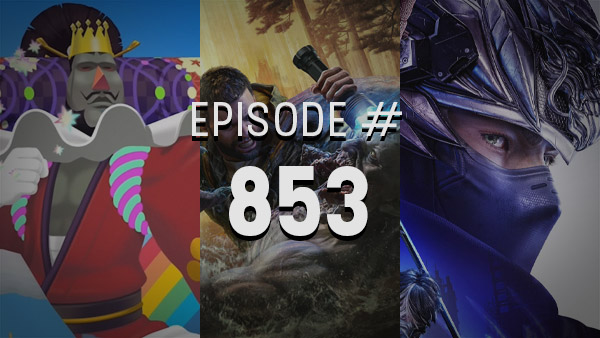

Comments
12 years, 3 months ago
Such a long and good read of a review, but no score at the end of it?
12 years, 3 months ago
Your video reviews are always topnotch!
12 years, 3 months ago
Nice in-depth review as usual, Chris. In my opinion if Ubisoft spent more time on character development, Blacklist could be the best Splinter Cell game to date. Perfectionist is the way to play the game. I'm playing on Perfectionist and trying to ghost through. So far 2 main missions and a few side missions without killing anyone. The game is pretty damn challenging when playing on purist. For example there are no save check points in side missions when playing on Perfectionist. One detection and it's game over and sometimes it takes 30 minutes to finish a mission. It's like I'm paying Dark Souls of Splinter Cell. SvM Classic is my favorite as well probably because I had a great time playing Pandora Tomorrow. I'm not a huge fan of deadly spies that can kill mercs by stabbing them in a face, but I can leave with that. All in all, I'm enjoying the game and it looks pretty good on PC.
12 years, 3 months ago
I always enjoy your reviews Chris, you go all out and I love it.
12 years, 3 months ago
Needs more Assault Run.
12 years, 3 months ago
Great review and I agree on basically all points, but the Eric Johnson vs. Michael Ironside thing does deserve mention of Ubisoft's "full motion capture" technology: it would be impossible, or at least very unwieldy, to dub Fisher in post-production because what is being done is effectively the facial technology from L.A. Noire taken up to 11. i.e., the scenes are fully acted out with standard full-body mo-cap, but the actors have big ol' headsets with cameras pointed at their faces and microphones jacked in to record their lines right as they all act out the scenes.
I miss Ironside's voice for Sam, and the game could've used it, but try to imagine the idea of someone redubbing the voices of an L.A. Noire character and why it just couldn't be done starts to firm up a bit. I had massive issues with Johnson's Sam for a while, but eventually I just went "I guess it's a James Bond thing" and dealt with it. Still a great, great game, and some of the performances- particularly the main villain- can be quite good.
12 years, 3 months ago
Good review, you actually cleared up my fears about a "Conviction 2". I'll probably pick this up some time in the future.
12 years, 3 months ago
I have not played a splinter cell since....god, Must be since the first two or three games. But overall ya...It looks like this game was good but it could have been much more. Seems to be happening more these days.
11 years, 11 months ago
I have read about the new game series here and very much excited to check the new list of songs’ like making note of the article that you have provided me on the list of new series under metal gear solid. Good one